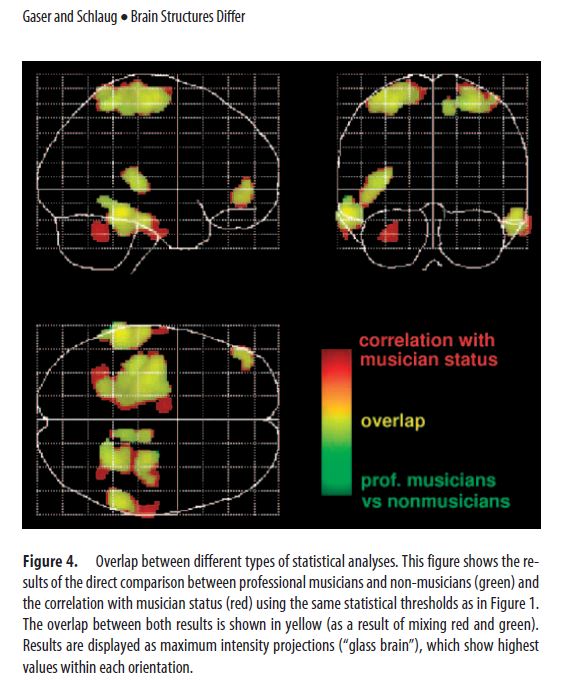Are you looking for a great book to add to your holiday reading list?
By Developing Voices Author Jamea J. Sale, MME

Are you looking for a great book to add to your holiday reading list? I suggest Musicophilia (2007) by Oliver Sacks. Musicophilia explores the wonders of the brain, neuroscience and music. In any other hands the topic could make for dry reading, yet Sacks exudes enthusiasm about advances in neuroscience which enabled the visualization of the human brain under the influence of music. Sacks also adhered to his point of view that the description and observation of the people being studied is paramount. Perhaps this explains why Sacks’ writing is so appealing and accessible to readers; he weaves the clinical aspects of musicophilia into an artful telling of each patient’s life experience.
What is musicophilia? The Greek word suffix -philia as applied to music refers to an abnormal or heightened awareness of music which presents as intense music-seeking or music-associated behaviors in people. This might include the playing of music, dancing, or singing along to tunes (Fletcher, Downey, Witoonpanich, & Warren, 2013). An example is the account of Tony Cicoria, a surgeon who had a near death experience when he was struck by lightning in a telephone booth. He made a full recovery and returned to his work as a surgeon, but his life was transformed by an extraordinary craving to play the piano thereafter.
Sacks refers to such phenomena as musical “hauntings.” Less dramatic hauntings occur for the average person. Many have experienced the occasional “ear-worm” in which a song is “stuck” in one’s mind. The music subverts a part of the brain somewhat like a tic. Unfortunately for some people, this repetitive firing of the brain becomes a musicophilia, and it takes on a disturbing pathological quality taking place at a high level in the brain.

Sacks made profound discoveries about music and the brain in his lifetime. Movie enthusiasts may be acquainted with the dramatic film called Awakenings, based on his 1973 book of the same name which recounted the experience of catatonic patients suffering the after-effects of sleeping sickness. These patients miraculously “awakened” after being treated with the drug, levodopa, but sadly the effects of the drug were short-lived. However, Sacks found that his patients responded to music! They were observed to temporarily move with ease and grace in response to music, and they could sing expressively. Music represented auditory dopamine for these patients, a testament to the therapy of music in their lives.
https://youtu.be/JAz-prw_W2A (Awakenings trailer)
Musically talented people are often described as having a marked, innate musical ability, and a good ear for pitch and rhythm (Watts, Murphy, & Barnes-Burroughs, 2003). In Musicophilia, Sacks suggested that there is innate musical talent in everyone but that the cognitive and emotional capabilities needed to grasp music varies from person to person. He explored the ability of people to realize the artistry, meaning, and phrasing of music, and the apparent neurological misalignment that inhibits some people from achieving their desire for great musical ability. The advent of MRI morphometry in the 1990s made it possible to visualize the brain structures of musicians. It was determined that in the brains of professional musicians, the corpus callosum is enlarged and that the planum temporale, a part of the auditory cortex, is asymmetrically enlarged in those having absolute pitch (Gaser & Schlaug, 2003; Hutchinson, Lee, Gaab, & Schlaug, 2003). There are “increased volumes of gray matter in the motor, auditory, and visuospatial areas of the cortex and in the cerebellum” of this population (Sacks, 2007, p. 100).

Figure 4: Gaser, C., & Schlaug, G., 2003, pp. 9243.
For a very few, amusia is a reality. Acquired amusia can occur as part of a neurological event (stroke, migraine, etc.) that may affect one’s perception of music. Researcher Steven Mithen, author of The Singing Neanderthal (2005), was convinced that musical language is embedded in the human genome, even more so than spoken language, yet Mithen said that he, himself was unable to match pitch or rhythm. Therefore, Mithen was compelled to discover whether his claim to life-long amusia could be overcome. His adventure involved taking singing lessons and having brain examinations under fMRI. Mithen’s singing practice not only led to heightened activity in his brain’s inferior frontal gyrus and superior temporal gyrus but Mithen also had substantial improvement in his ability to sing! After the year-long experiment, Mithen wrote that it is “remarkably difficult to sing—to simultaneously and unconsciously manage pitch, rhythm, timbre, tone, and dynamics—I am even more mystified as to why humans have evolved such an amazing ability.” (Mithen, 2008, p. 39).
Musicophilia concludes with a reminder that all cultures hold music in high esteem. It is central to human dance, religion, celebration and entertainment. One need not be particularly knowledgeable about music to be profoundly affected by it. The same could be said about the artfully woven personal stories and scientific studies of humans and music in Musicophilia. It is a compelling and worthwhile addition to your holiday reading list!
Jamea Sale, Director of the Institute for Healthy Singing: JSale@HealthySinging.org Executive Associate Director, William Baker Choral Foundation
Voice Specialist, Allegro Choirs of Kansas City
References
Fletcher, P. D., Downey, L., Witoonpanich, P., & Warren, J. (2013). The brain basis of musicophilia: evidence from
frontotemporal lobar degeneration. Frontiers in Psychology, 4, 347.
Gaser, C., & Schlaug, G. (2003). Brain structures differ between musicians and non-musicians. Journal of
Neuroscience, 23(27), 9240-9245.
Hutchinson, S., Lee, L. H. L., Gaab, N., & Schlaug, G. (2003). Cerebellar volume of musicians. Cerebral cortex, 13(9),
943-949.
Koelsch, S., Skouras, S., Fritz, T., Herrera, P., Bonhage, C., Küssner, M. B., & Jacobs, A. M. (2013). The roles of
superficial amygdala and auditory cortex in music-evoked fear and joy. Neuroimage, 81, 49-60.
Llinás, Rodolfo (2001). I of the Vortex: From Neurons to Self. Cambridge, Massachusetts: MIT Press.
Mithen, S. (2008). Singing in the brain. New Scientist, 197(2644), 38-39.
Robb, S., Hanson-Abromeit, D, May, L., Hernandez-Ruiz, E., Allison, M., Beloat, A., Daugherty, S., Kurtz, R., Ott, A.,
Oyedele, O., Polasik, S., Rager, A., Rifkin, J., & Wolf, E. (2018). Reporting quality of music intervention research in healthcare: A systematic review. Complementary therapies in medicine.
Sacks, O. (2007). Musicophilia: Tales of Music and the Brain. New York: Vintage Books.
Storr, A. (1992) Music and the Mind. New York: The Free Press.
Tomaino, C. M. (2015). Music therapy and the brain. Music therapy handbook, 40-50.
Watts, C., Murphy, J., & Barnes-Burroughs, K. (2003). Pitch matching accuracy of trained
singers, untrained subjects with talented singing voices, and untrained subjects with nontalented singing voices in conditions of varying feedback. Journal of Voice, 17(2), 185-194.


Leave a Reply
You must be logged in to post a comment.